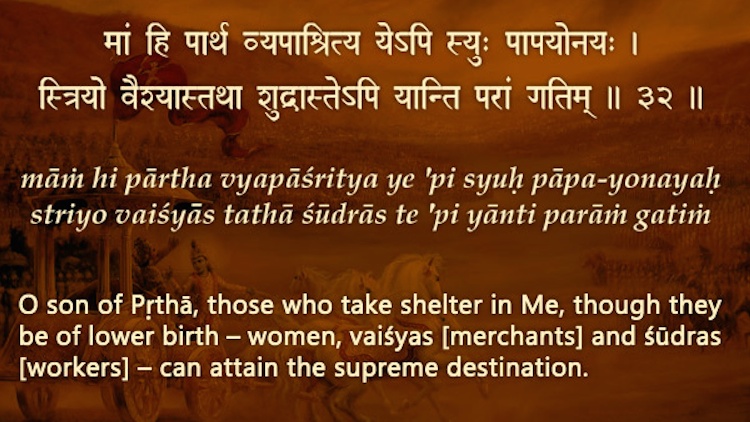Bhakti Subordinates Social Hierarchy to Spiritual Sincerity
By Chaitanya Charan Das | Nov 08, 2014

We live in an age that that cherishes equality of opportunity for all and celebrates the breaking down of barriers such as race. Intriguingly, a similar egalitarian spirit is enshrined in the Bhagavad-gita written millennia ago.
To understand the Gita’s egalitarianism, we need to understand its cultural context. Society in those days was stratified according to caste and gender. The intention of that stratification was benevolent: to create a socio-cultural environment conducive to everyone’s material wellbeing and spiritual growth. But even the best social arrangement is only as good as those who are going to implement it, that is, its members and especially its leaders. The Gita (04.02) indicates that the contemporary social leaders were deficient in spiritual wisdom. In fact, the Gita was spoken, as the next verse (04.03) indicates, to help correct this deficiency by enlightening a social leader, Arjuna.
Within the prevailing less-than-ideal culture, the lower castes and women were sometimes deemed under-qualified to join some religious practices. The Gita circumvents such barriers by offering the universally accessible path of bhakti, a path that depends on the sincerity of the heart, not the position in the social hierarchy. The sincerity of heart refers to one’s earnest aspiration to offer one’s love to God and attain his grace – it is eminently in one’s hands. One’s position in the social hierarchy depends on one’s karmic history in past lives that determines one’s present body – it is not much in one’s hands.
The Gita (09.32) boldly declares that all people, whatever be their social position, can take shelter of Krishna and attain the supreme destination – something that the conventional culture held was possible only for the most pious brahmanas and only after many lifetimes of piety.
Thus, bhakti by providing equal spiritual opportunity for everyone manifests the ultimate egalitarianism.















